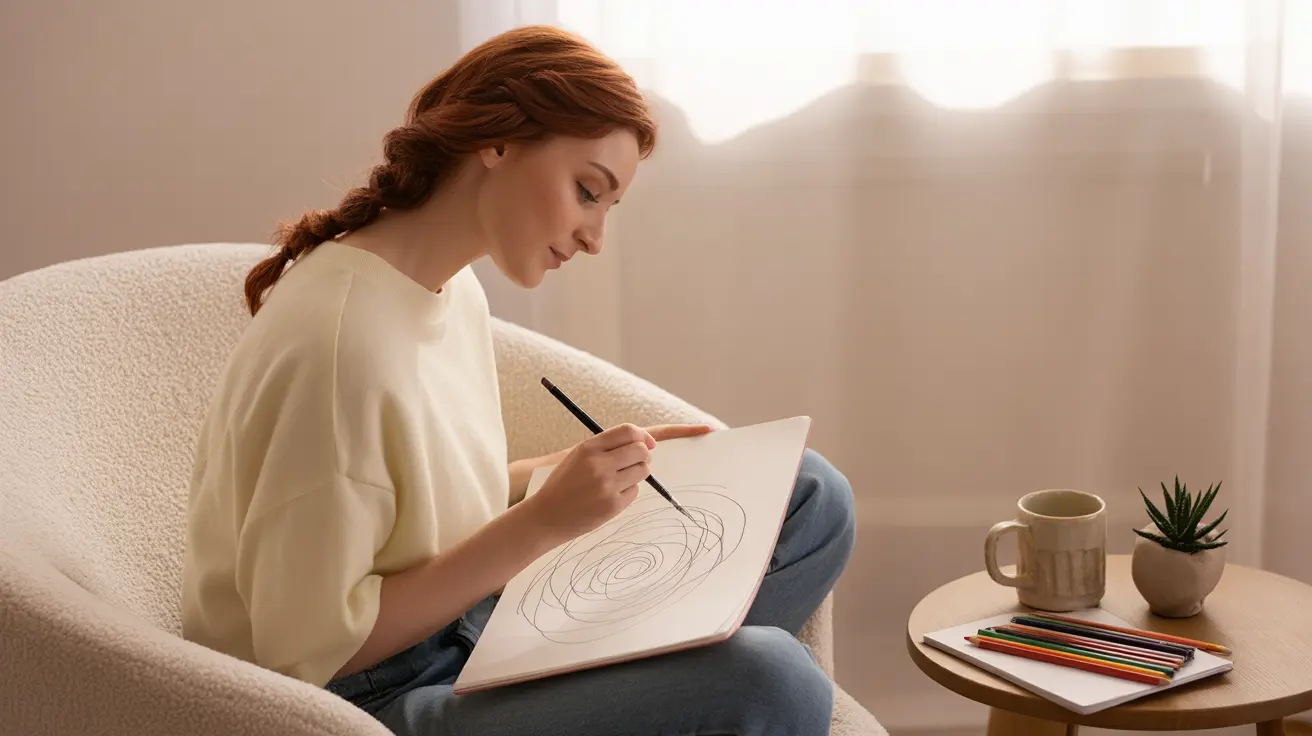When anxiety strikes, finding effective coping mechanisms can make all the difference in managing symptoms and regaining emotional balance. One particularly powerful yet often overlooked tool is drawing and artistic expression. Research has shown that engaging in art activities can significantly reduce anxiety levels while promoting emotional well-being and self-awareness.
Whether you're an experienced artist or someone who hasn't picked up a pencil since grade school, incorporating drawing into your anxiety management routine can offer remarkable benefits. Let's explore how this creative practice can help calm your mind and provide relief from anxiety symptoms.
Understanding the Connection Between Art and Anxiety Relief
Creating art engages multiple sensory and cognitive processes that naturally help reduce anxiety. When we draw, our brain shifts focus from worrying thoughts to the present moment, similar to mindfulness meditation. This artistic engagement activates the parasympathetic nervous system, helping to lower stress hormones and promote relaxation.
The physical act of drawing can also serve as a form of emotional release, allowing individuals to express feelings that may be difficult to put into words. This non-verbal expression can be particularly beneficial during times of intense anxiety when verbal communication feels challenging.
Simple Drawing Exercises for Anxiety Management
Mindful Doodling
Start with basic shapes and patterns, allowing your hand to move freely across the paper without judgment. This simple exercise helps quiet racing thoughts and promotes present-moment awareness. Focus on the sensation of the pencil moving across the paper and the patterns emerging before you.
Emotion Mapping
Create abstract representations of your feelings using different colors, shapes, and lines. This technique helps externalize anxiety and gives it a visual form, making it easier to process and understand your emotional state.
Nature Sketching
Drawing elements from nature, such as leaves, flowers, or landscapes, can help ground you in the present moment while connecting with the calming aspects of the natural world. Don't worry about perfection – focus on the process rather than the outcome.
Integrating Art into Your Anxiety Management Routine
To make drawing a effective part of your anxiety management strategy, consider these practical tips:
- Keep simple art supplies readily available
- Set aside dedicated time for artistic expression
- Create a comfortable, quiet space for drawing
- Combine drawing with other relaxation techniques
- Document your progress in an art journal
The Science Behind Art Therapy and Emotional Regulation
Research has demonstrated that artistic activities can help regulate emotions by activating the reward centers in our brain and reducing activity in the amygdala, the area responsible for processing fear and stress responses. This neurological impact helps explain why drawing can be such an effective tool for managing anxiety symptoms.
Additionally, the repetitive motions involved in drawing can create a rhythm that helps synchronize brain activity and promote a sense of calm, similar to the effects of meditation or deep breathing exercises.
Frequently Asked Questions
How does drawing help reduce symptoms of anxiety? Drawing helps reduce anxiety by shifting focus away from worried thoughts, engaging the mind in a calming activity, and providing a healthy outlet for emotional expression. It activates the parasympathetic nervous system, which helps decrease stress responses in the body.
Can art therapy be effective for people who are not skilled at drawing? Yes, absolutely! The therapeutic benefits of drawing come from the process itself, not the final product. No artistic skill is required to experience the anxiety-reducing effects of creative expression. The focus should be on the experience rather than creating polished artwork.
What are some simple drawing exercises that can help manage anxiety? Simple exercises include mindful doodling, creating repetitive patterns, emotion mapping through abstract shapes and colors, and nature sketching. These activities can be done with basic materials and require no artistic expertise.
How does creating art improve emotional regulation during anxiety? Creating art helps with emotional regulation by providing a safe outlet for expression, engaging multiple senses, and activating parts of the brain associated with pleasure and relaxation. The process helps externalize and process difficult emotions in a constructive way.
Is it beneficial to use drawing as part of a self-care routine for anxiety relief? Yes, incorporating drawing into your self-care routine can be highly beneficial for anxiety relief. Regular artistic practice can help build resilience, develop healthy coping mechanisms, and provide a reliable tool for managing anxiety symptoms when they arise.




